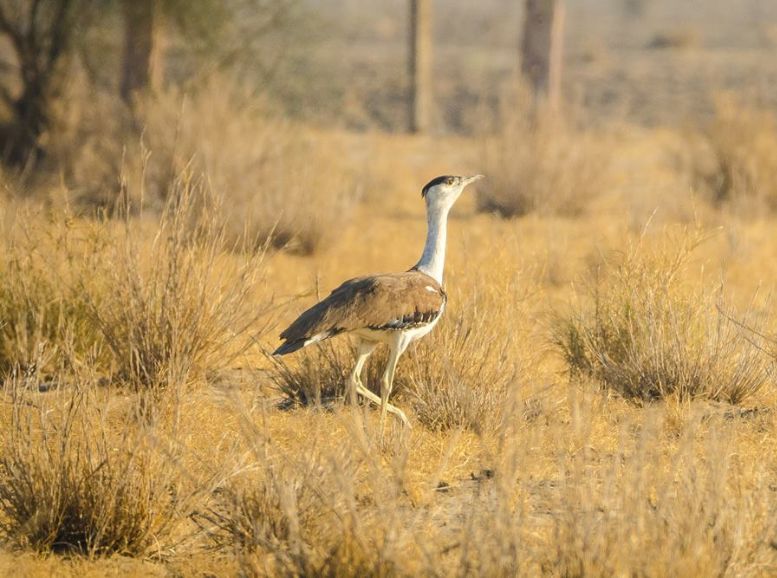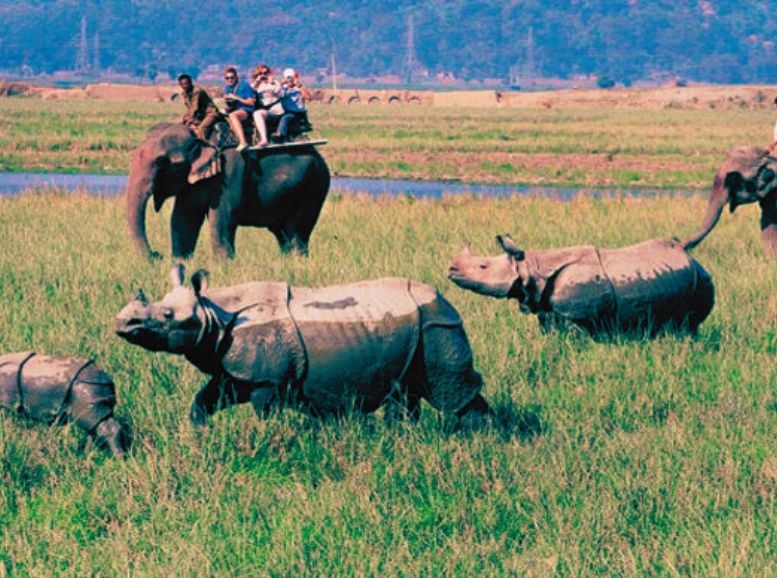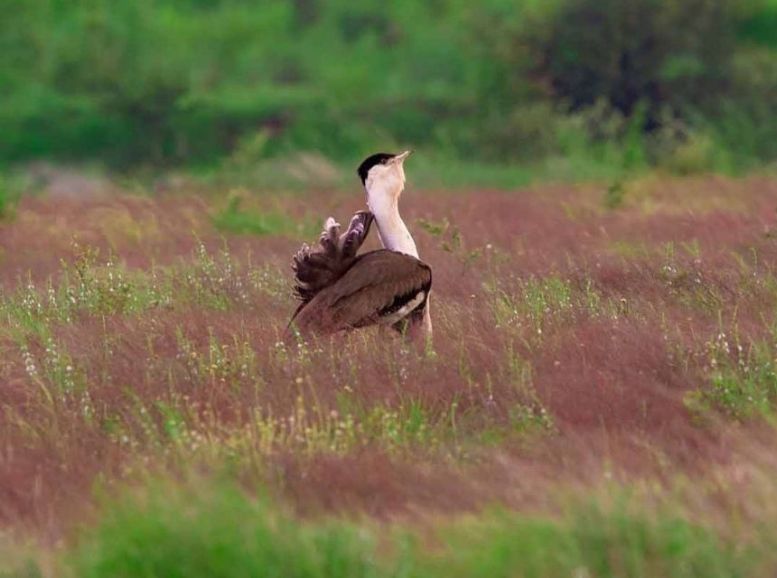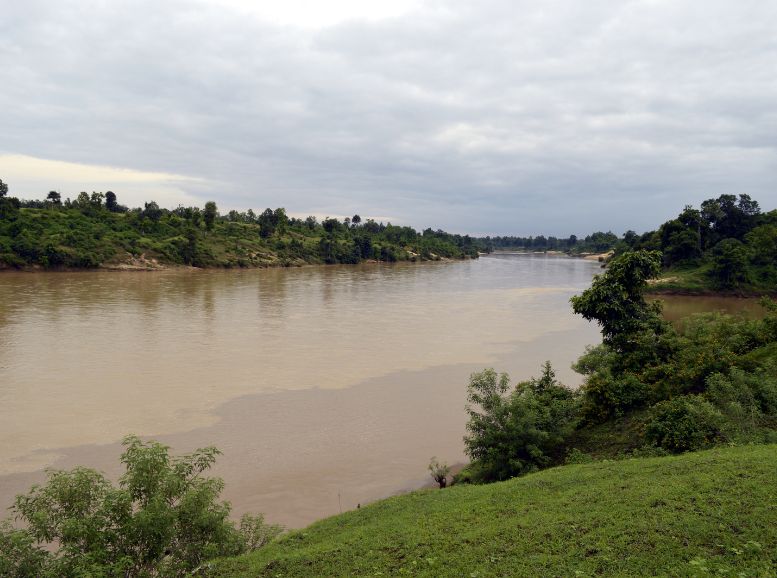Immerse yourself in the untouched beauty of Son Chiriya Sanctuary, a hidden gem nestled in the heart of Kaimur, Bihar. This lesser-known haven boasts lush forests, serene landscapes, and a vibrant tapestry of wildlife, offering an idyllic escape for nature enthusiasts, birdwatchers, and adventure seekers alike. Whether you seek a day trip or an extended exploration, this sanctuary promises an unforgettable experience, far from the chaos of city life.
How to reach:
Air:
- Fly into Lal Bahadur Shastri International Airport in Varanasi (around 150 kilometers away). From there, hire a taxi or use public transport to reach Kaimur, the nearest town to the sanctuary.
Train:
- Catch a train to Bhabua Road Railway Station, situated about 60 kilometers from the sanctuary. This station boasts good connections to major Indian cities. Once you arrive, take a taxi or bus to reach Son Chiriya Sanctuary.
Road:
- Son Chiriya Sanctuary is easily accessible by road from various cities and towns.
- Driving from Patna (approximately 200 km): Follow NH31 to NH19, then take NH19 to NH2 in Mohania. Continue on NH2 until you reach your destination.
- Traveling by road from Varanasi (approximately 150 km): Take NH31 and NH19 to NH2 in Mohania, and then continue on NH2 to the sanctuary.
Bus:
- Regular bus services operate from Patna, Varanasi, and Gaya to Kaimur. Upon reaching Kaimur, you can hire a local taxi, auto-rickshaw, or cycle-rickshaw to complete your journey to the sanctuary.
Local Transport:
- Once in Kaimur, auto-rickshaws, cycle-rickshaws, and taxis are available for getting around. Remember to negotiate fares in advance for these local rides.
Best time to visit:
Winter Wonderland (October to February): Experience Son Chiriya at its finest with comfortable temperatures (10°C to 25°C) ideal for exploration. Wildlife viewing thrives during this season as animals become more active, and migratory birds arrive, exciting birdwatchers. Lush greenery from the post-monsoon period paints a photographer’s dream. Be prepared for more visitors, though, as this is peak season.
Tranquility or Heatwave? (March to June): Summer offers a quieter visit to Son Chiriya with fewer crowds. While temperatures soar (30°C to 45°C), animals gather near water sources, making them easier to spot. Despite the heat, the serene atmosphere and potential for close wildlife encounters can be worth braving the temperatures.
Emerald Enchantment (July to September): The monsoon season bathes Son Chiriya in a vibrant, verdant cloak. Fewer tourists create a peaceful escape. However, heavy rains can limit accessibility due to muddy trails. Wildlife sightings may be less frequent as animals seek shelter, but the lush landscape and tranquil atmosphere offer a unique experience for those who love the rainy season.
Attractions:
Great Indian Bustard Habitat:

The crown jewel of Son Chiriya Sanctuary is the Great Indian Bustard, or “Son Chiriya” as the locals call it. This magnificent bird, one of the heaviest to take flight, is sadly classified as critically endangered. Visitors are captivated by its striking appearance and fascinating behaviors. The sanctuary’s vast, undisturbed grasslands provide the perfect habitat for these birds, making Son Chiriya a crucial refuge for their dwindling population. Birders and nature enthusiasts flock here, hoping for a glimpse of this elusive creature. Witnessing a Great Indian Bustard in its natural environment is a rare and unforgettable experience. It highlights the critical role Son Chiriya plays in protecting our precious ecosystems.
Wildlife Safaris, Son Chiriya Sanctuary:

Son Chiriya Sanctuary comes alive with its exhilarating wildlife safaris. These guided adventures take you on a journey through the heart of the sanctuary, exploring dense forests, sprawling grasslands, and serene water bodies. Witness the incredible biodiversity firsthand as you spot animals like the elusive Indian Wolf, the graceful Chinkara (Indian Gazelle), the fascinating Sloth Bear, and a variety of deer species. Conducted with the utmost respect for the wildlife, these safaris ensure minimal disruption, allowing for close yet responsible encounters. Expert local guides will be by your side, sharing fascinating insights into the behaviors and habitats of these animals, along with the ongoing conservation efforts that protect them.
Birdwatching:

Birders flock to Son Chiriya Sanctuary, a haven buzzing with a vibrant tapestry of avian life year-round. From sprawling grasslands to lush forests and hidden wetlands, the sanctuary offers a haven for resident and migratory birds alike. Early mornings and late afternoons paint the ideal scene for observation as the sanctuary comes alive with the music of chirps and calls. Keep your eyes peeled for the majestic Great Indian Bustard, the national treasure, but don’t miss the dazzling display of Indian Peafowls, soaring eagles and owls, and a kaleidoscope of smaller birds like flitting kingfishers, bee-eaters, and warblers. Winter brings an even richer chorus as migratory birds join the local residents.
Rivers and Water Bodies:

Son Chiriya Sanctuary isn’t just about lush greenery. Sparkling rivers and tranquil water bodies weave throughout the landscape, adding scenic beauty and ecological diversity. These freshwater sources are lifelines for the sanctuary’s wildlife, providing essential resources for animals and birds, especially during dry seasons. But for visitors, they transform into idyllic spots for relaxation and connecting with nature. Picture a picnic by a gurgling river, or a leisurely walk along a lakeshore, offering a peaceful escape from the everyday rush. Lush vegetation fringing these water bodies creates a natural hideaway for wildlife watching, especially during the cooler mornings and evenings when animals come to drink.
Local Experiences:
- Immerse yourself in culture: Explore neighboring villages and gain insights into the traditional lifestyles and customs that have co-existed with the sanctuary’s wildlife for generations. Interact with the villagers and learn how they live in harmony with nature.
- Festivals and celebrations: Immerse yourself in the vibrant cultural heritage of the region by participating in local festivals and celebrations. Witness the joy and traditions firsthand.
- Village markets: Visit bustling village markets to discover a treasure trove of local crafts. Take home a piece of the region’s heritage by purchasing unique handmade souvenirs.
- Tantalize your taste buds: Savor authentic Bihari cuisine at local eateries or enjoy a home-cooked meal with a village family. Sample regional specialties like litti-chokha, sattu paratha, and local sweets, and embark on a delightful culinary journey.
- Uncover hidden gems: Embark on guided nature walks with local experts. Leverage their extensive knowledge of the flora and fauna to discover hidden waterfalls, medicinal plants used by villagers, and the secrets of the sanctuary’s ecosystem.
- Workshops galore: Attend workshops on traditional crafts like pottery, weaving, and basket-making. Unleash your inner artisan and learn these age-old skills while supporting local communities through purchasing their beautiful handcrafted products.
- Be the change: Participate in community-based conservation projects and activities. Learn about local conservation efforts and how villagers contribute to protecting the sanctuary. Become part of the solution and ensure a thriving future for Son Chiriya’s wildlife.
- Homestay immersion: Experience rural life firsthand by staying with welcoming local families in homestay accommodations. Enjoy authentic hospitality, learn about daily life in the village, and create lasting memories.
Travel tips:
- Guided Tours: Opt for guided tours or safaris offered by the sanctuary authorities or local guides. This maximizes wildlife sightings and provides valuable insights into the area’s biodiversity.
- Respect the Guidelines: Follow wildlife viewing guidelines to minimize disturbance. Use binoculars and maintain a safe distance from animals.
- Capture the Beauty: Photography is encouraged, but ensure it doesn’t harm wildlife or disrupt their habitats.
- Be Prepared: Follow safety precautions, especially during treks and safaris. Wear appropriate clothing and footwear for outdoor activities.
- Local Customs: Be mindful of local customs and traditions when interacting with villagers or participating in cultural activities.
- Conservation Awareness: Learn about the sanctuary’s conservation efforts and how you can contribute to protecting this natural treasure.
- Leave No Trace: Practice responsible tourism by leaving no litter behind and minimizing your impact on the environment.
- Pack for the Season: Pack according to the weather, especially if visiting during summer or monsoon seasons.
- Stay Healthy: Carry necessary medications and stay hydrated, particularly during outdoor activities.
- Emergency Preparedness: Keep contact numbers of local authorities, accommodations, and emergency services handy.
Conclusion
Calling all nature enthusiasts, birdwatchers, and adventurers! Nestled in Bihar’s Kaimur district, Son Chiriya Sanctuary is a hidden gem waiting to be explored. This haven boasts a unique blend of wildlife encounters, breathtaking landscapes, and immersive cultural experiences. Imagine spotting the majestic Great Indian Bustard, trekking through the picturesque Kaimur Hills, or delving into the vibrant local traditions. Son Chiriya promises an unforgettable adventure, leaving you breathless with its beauty. Let Xplro.com, your ultimate travel companion, guide you every step of the way. Explore our website to discover the best time to visit, permit requirements, responsible tourism practices, and exciting activities like wildlife safaris, cultural explorations, and indulging in local cuisine. Craft your dream Son Chiriya Sanctuary escape with Xplro.com and discover the magic that awaits.
FAQs
How do I get to Son Chiriya Sanctuary?
- You can reach Son Chiriya Sanctuary by flying to Lal Bahadur Shastri International Airport in Varanasi, about 150 kilometers away. Alternatively, you can take a train to Bhabua Road Railway Station, which is approximately 60 kilometers from the sanctuary. The sanctuary is also accessible by road, with well-connected highways leading to it.
Are there places to stay near the sanctuary?
- Yes, there are various accommodation options near the Son Chiriya Sanctuary, including budget hotels and mid-range lodges in nearby towns. It is advisable to book your stay in advance, especially during the peak tourist season.
Do I need a permit to visit the Son Chiriya Sanctuary?
- Yes, visitors typically need an entry permit to access Son Chiriya Sanctuary. These permits can be obtained at the sanctuary entrance or through local tourism offices.
What kinds of wildlife can I see in the sanctuary?
- Son Chiriya Sanctuary is home to a diverse range of wildlife, including the critically endangered Great Indian Bustard, Indian Wolf, Chinkara (Indian Gazelle), Sloth Bear, Indian Peafowl, and various bird species.
Are guided tours offered in the Son Chiriya Sanctuary?
- Yes, guided tours and wildlife safaris are available and are highly recommended. Local guides can provide in-depth knowledge about the sanctuary’s flora and fauna, enhancing your visit.
What should I bring for my visit to Son Chiriya Sanctuary?
- You should bring comfortable clothing suitable for outdoor activities, sturdy walking shoes, binoculars, a camera, sunscreen, insect repellent, and any personal medications you might need.
Is the sanctuary open during the monsoon season?
- Yes, the Son Chiriya Sanctuary is open during the monsoon season (July to September). However, heavy rains can make some areas challenging to access. The greenery is lush and beautiful, but wildlife sightings may be less common during this period.
Is trekking safe in the sanctuary?
- Yes, trekking in the Son Chiriya Sanctuary is generally safe, especially if you stick to marked trails and follow the guidelines provided by local authorities. Hiring a local guide is recommended for both safety and a more informative experience.
What local activities can I participate in near the sanctuary?
- You can visit nearby villages to learn about local culture, join traditional craft workshops, taste local cuisine, and take part in community conservation efforts. Homestays are also available for an immersive cultural experience.
How can I help with conservation efforts at the sanctuary?
- Visitors can help by following Son Chiriya Sanctuary rules, minimizing environmental impact, participating in conservation education programs, and supporting local communities through responsible tourism.
Are there specific rules to follow while visiting the sanctuary?
- Yes, it is important to respect wildlife by keeping a safe distance, not feeding animals, not littering, and following the instructions of guides and v officials. These rules help protect the sanctuary’s natural environment and wildlife.





